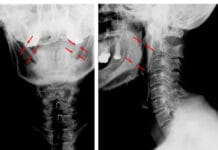Disclosure: We value transparency at Today’s RDH. This quiz is sponsored content from Dentsply Sirona Preventive as part of our sponsored partner program.
Worldwide, approximately how many adults have severe periodontitis?
Research shows some alarming statistics concerning periodontal disease. According to the World Health Organization, approximately 50 to 90% of adults worldwide have gingivitis, and 10 to 15% of adults worldwide have severe periodontitis*—making regular dental visits and procedures like non-surgical periodontal therapy/SRP critical.
*Pertersen P.E., Ogawa, H. (Dec 2005). Strengthening the Prevention of Periodontal Disease: The WHO Approach. Journal of Periodontology. Retrieved from http://www.who.int/oral_health/publications/jop2005_76_12_2187.pdf?ua=1
What percent of patients prefer ultrasonic scaling vs. hand scaling?
When it comes to ultrasonic scaling vs. hand scaling, research provides a pretty compelling story. The Journal of Periodontics & Restorative Dentistry published that 74% of patients indicated a strong preference for ultrasonic scaling over hand scaling*. According to this study, “Patients preferred ultrasonic scaling with a manually adjustable unit using specialized tips to hand scaling. Overall, respondents found ultrasonic significantly better in all respects to hand scaling (Build-up removal, time efficiency, sore gums, bleeding gums, gagging, sound, clean teeth, pressure, pain, efficiency, messiness, overall).”
*Croft, L.K., Nunn, M.E., Crawford, L.C., Holbrook, T.E., McGuire, M.K., Kerger, M.M., & Zacek, G.A. (2003). Patient Preference for Ultrasonic or Hand Instruments in Periodontal Maintenance. International Journal of Periodontics and Restorative Dentistry, 23(6), 567-573.
The appropriate Cavitron Ultrasonic Insert for the removal of biofilm and light calculus is:
For biofilm and light calculus removal, the Cavitron Thinsert is 47% thinner than FSI Slimline-10, the Thinsert provides access in difficult areas, including misalignments, interproximal surfaces, and tight tissues, without loss of tactile sensation. Also, research has found that the Thinsert provides a tactile feel so you can efficiently detect and remove calculus without transitioning between an explorer and your insert*.
For light to moderate calculus removal, the Cavitron Slimline family is 30% thinner than Powerline Ultrasonic Inserts for improved subgingival access.
For moderate to heavy calculus removal, the Cavitron Powerline family features thicker inserts with larger tips, specifically designed for efficient removal of heavier deposits.
*Based on data from testing conducted by the Ohio State University: the article manuscript is currently in the peer review process and will likely be published in early 2018.
After 2mm of wear, an ultrasonic insert has 59% loss of efficiency.
The last 4mm of a Cavitron Ultrasonic Insert is referred to as the tip’s active area. This area of the tip adapts to the tooth surface to remove calculus and biofilm while scaling. As a tip wears from use over time, this loss of tip length translates into a loss of efficiency. Research shows that after 2mm of wear, an ultrasonic insert has 59% loss of efficacy*. Worn tips can cause the use of excessive pressure while scaling, which results in discomfort for both the clinician and patient.
*Data on file via an R&D Memo through a measurement study to put the loss of scaling are into perspective. Each oscillation on its own is a fraction of a millimeter. However, over the course of just 1 second, a new ultrasonic insert tip will move 7.75 feet or 2.36 meters. In that same 1 second, a tip that has experienced 2mm of tip wear will only move 3.15 feet or 0.96 meters. This worn tip is experiencing a 59% reduction in scaling area thus resulting in a significant loss of efficiency.
On average, how much treatment time can be saved by the addition of using an ultrasonic scaler than by scaling using hand instruments alone?
According to a systematic review by the Journal of Clinical Periodontology*, “For initial therapy, the debridement with ultrasonic/sonic instruments took, on average, 36.6% less time than the treatment with hand instruments. The time required to complete a treatment has a direct effect on the cost-benefit ratio.”
*Tunkel, J. Heinecke, A., Flemmig, T.F. (2002). A Systematic Review of Efficacy of Machine-Driven and Manual Subgingival Debridement in the Treatment of Chronic Periodontitis. Journal of Clinical Periodontology. 29 Suppl 3:72-81; discussion 90-1. Retrieved from https://www.ncbi.nlm.nih.gov/pubmed/12787208








